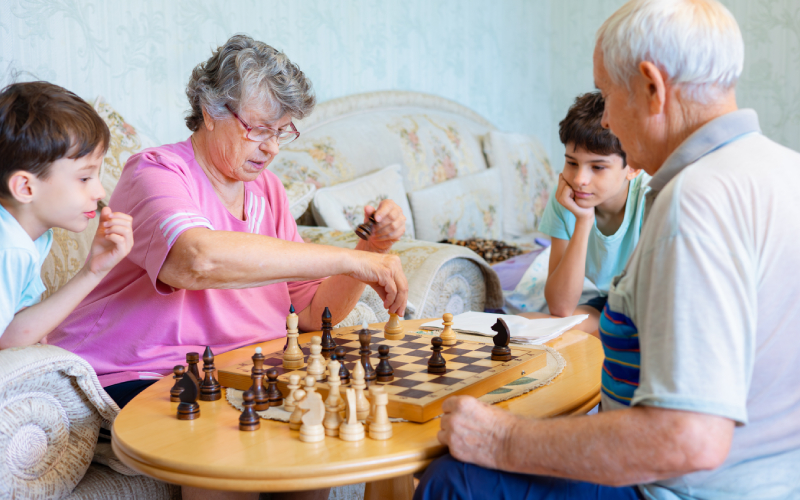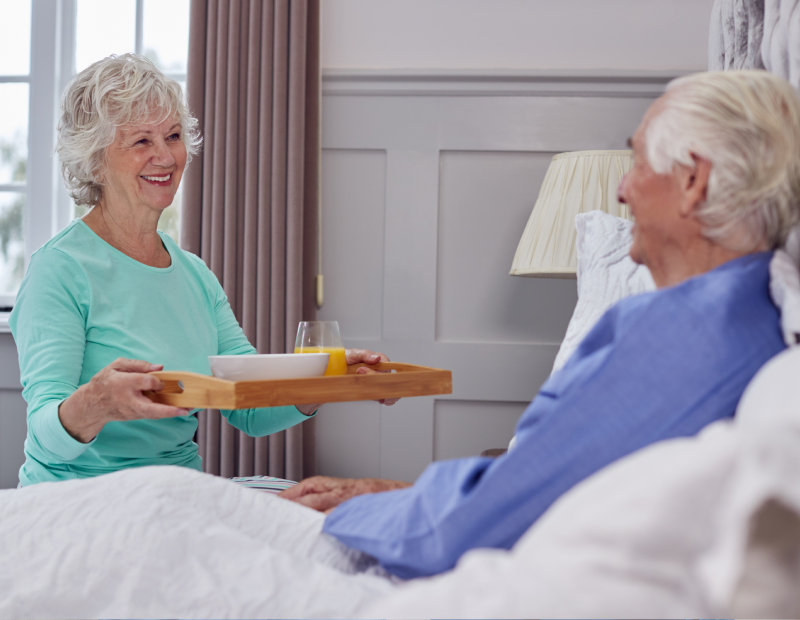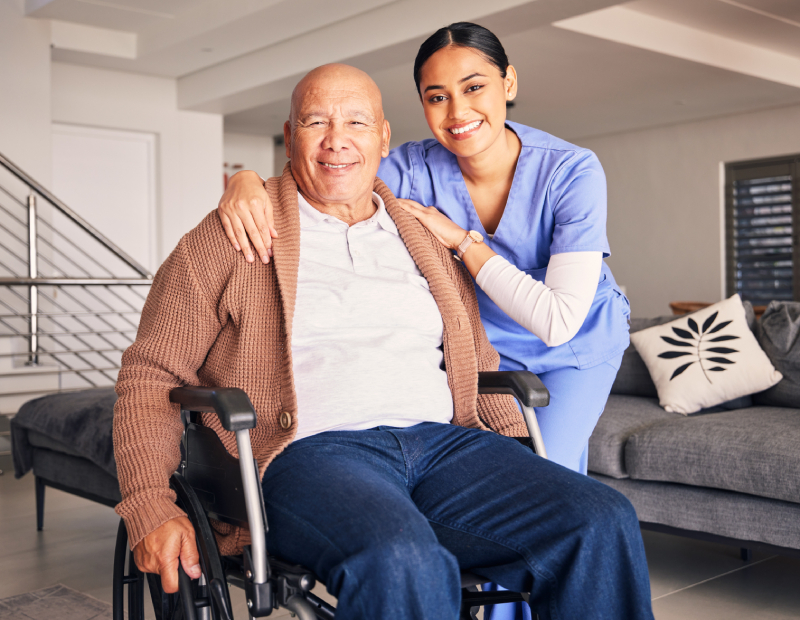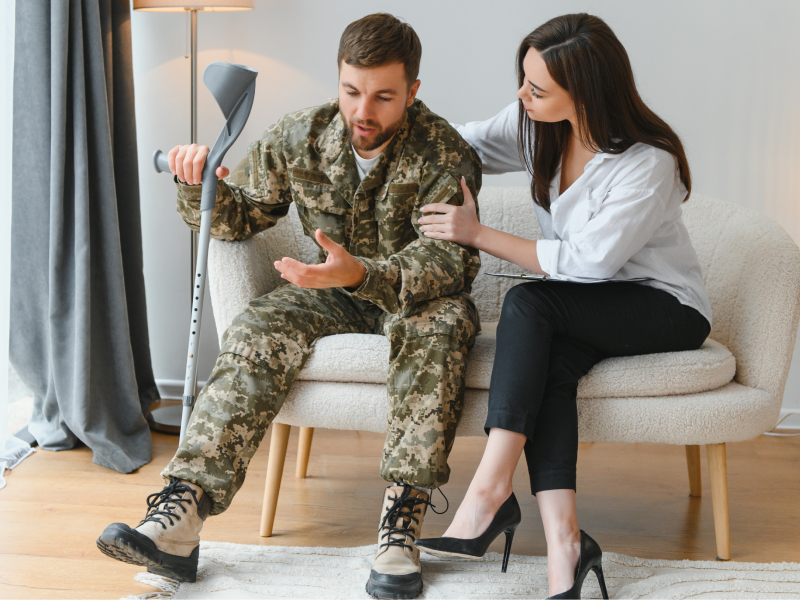Importance of Assistive Technology
Assistive technology plays a significant role in empowering seniors and veterans, enabling them to maintain independence in their daily activities and enhancing their quality of life. Here, we delve into how this technology can enhance daily living and overall well-being.
Enhancing Independence in Daily Activities
As individuals age, maintaining the ability to perform activities of daily living (ADLs) becomes crucial for their independence. Assistive technology provides the necessary tools to support these activities, offering solutions tailored to various needs, whether it’s cognition, mobility, or self-care (WHO).
For example, mobility aids like walkers and wheelchairs can help seniors move around their homes safely. Devices designed for self-care, such as grab bars and raised toilet seats, offer the support required for bathing and toileting, minimizing the risk of falls. By implementing these tools, seniors can continue to engage in their everyday tasks without excessive dependence on caregivers.
Assistive devices are particularly valuable in providing the right level of support while encouraging autonomy. By integrating these devices, we can foster a sense of self-reliance among seniors and veterans, ultimately contributing to their overall health and well-being.
Promoting Quality of Life
The positive impact of assistive technology extends beyond physical independence, promoting an enhanced quality of life for seniors. Reliable technologies in communication, such as hearing aids and adaptive communication devices, help individuals stay connected with loved ones and maintain active social lives. This inclusion is essential for emotional well-being and preventing feelings of isolation.
To better understand the benefits, consider the following table demonstrating the correlation between different types of assistive technology and their impact on daily activities:
| Assistive Technology Type | Impact on Daily Activities |
|---|---|
| Mobility Aids (e.g., walkers, wheelchairs) | Enhanced movement and safety |
| Self-Care Devices (e.g., grab bars, raised toilet seats) | Easier and safer personal hygiene |
| Communication Aids (e.g., hearing aids, communication devices) | Improved social interaction |
| Vision Aids (e.g., magnifying devices, talking books) | Enhanced reading and visual tasks |
These technologies not only support physical functions but also contribute significantly to mental and emotional health. By facilitating easier engagement in day-to-day activities, assistive technology fosters a sense of accomplishment and purpose. This is particularly important for veterans who may be adjusting to new routines and require customized support.
For those interested in exploring more about the role of assistive devices, please refer to our detailed guides on the role of assistive devices and how meal preparation services improve seniors’ well-being.
Ultimately, assistive technology is a cornerstone in promoting independence and improving the overall quality of life for seniors and veterans. By leveraging these tools, we can ensure that our loved ones thrive in their daily activities and maintain their dignity and self-sufficiency. For a broader understanding of our services and their impact on senior life, you might find our article on how non-medical home care promotes senior independence highly informative.
Understanding Activities of Daily Living (ADLs)
Definition and Importance
Activities of Daily Living (ADLs) are fundamental skills required for independent self-care. These tasks encompass essential functions such as eating, bathing, dressing, toileting, and maintaining mobility. ADLs are crucial indicators of an individual’s ability to live independently and their overall well-being.
Understanding how activities of daily living (ADLs) keep seniors independent helps us identify who may need assistance and develop appropriate care strategies.
Impact on Seniors’ Well-being
The ability to perform ADLs significantly impacts seniors’ physical and emotional well-being. Loss of functional status in these areas often leads to dependence on others or assistive devices, influencing their quality of life (NCBI Bookshelf). Regular assessment of ADLs by healthcare professionals can help in monitoring seniors’ functionality and providing necessary support.
Several factors can lead to a decline in ADLs among seniors, such as aging, musculoskeletal issues, neurological conditions, circulation problems, sensory impairments, cognitive decline, social isolation, medication side effects, and environmental factors (NCBI Bookshelf). Hospitalization for acute illnesses can also contribute to a deterioration in ADLs over time.
| Factors Contributing to ADL Decline | Examples |
|---|---|
| Health Conditions | Musculoskeletal, Neurological, Circulatory |
| Environmental | Home Setup, Social Isolation |
| Others | Aging, Medication Side Effects |
In assessing and supporting seniors with ADLs, healthcare professionals such as nurses and occupational therapists play a vital role. They collaborate to evaluate individuals’ abilities and design interventions that enhance their independence (NCBI Bookshelf). Communication between nurses, other healthcare providers, and family members ensures that seniors receive the best possible care.
Exploring the importance of instrumental activities of daily living (IADLs) can provide further insights into how comprehensive care can improve seniors’ quality of life. For those requiring assistance, our comprehensive guide to non-medical home care in Sacramento offers valuable information.
By understanding and addressing changes in ADLs, we can help seniors maintain their independence and enhance their overall well-being. Discover more about how Bravo Personal Care Services ensures quality care for seniors to support them in their daily lives.
Assessing Activities of Daily Living
Methods of Evaluation
Proper assessment of Activities of Daily Living (ADLs) is crucial for ensuring that seniors can remain as independent as possible. Nurses, care managers, physicians, physical and occupational therapists, and insurance providers all play pivotal roles in evaluating and planning care based on ADLs.
Here are some commonly used methods to assess ADLs:
- Barthel Index: This tool measures the ability to perform ten basic ADLs, such as feeding, bathing, dressing, and mobility. Higher scores indicate greater independence.
- Katz Index: This assessment evaluates a senior’s ability to perform six basic functions, including bathing, dressing, transferring, and feeding.
- Functional Independence Measure (FIM): Used primarily in rehabilitation settings, this scale assesses physical and cognitive disabilities in 18 areas.
- Lawton Instrumental Activities of Daily Living (IADL): Focuses on more complex activities like using the phone, managing finances, and shopping.
| Assessment Tool | ADLs Measured | Scoring System |
|---|---|---|
| Barthel Index | 10 ADLs | 0-100 |
| Katz Index | 6 Basic ADLs | 0-6 |
| FIM | 18 Activities | 1-7 per activity |
| Lawton IADL | 8 Instrumental ADLs | 0-8 |
Additional evaluations might include poor objective physical performance and cognition, which have been found to predict higher functional status as indicated by Barthel Index scores.
Importance of Regular Assessment
Regular assessment of ADLs is vital for tracking changes in a senior’s functional abilities and planning appropriate interventions. This is especially important for veterans receiving non-medical in-home care. By frequently evaluating their ability to perform daily activities, we can identify needs early and adjust care plans accordingly to help maintain independence.
In a 2011 survey, it was found that the need for help with ADLs increased significantly with age. For adults aged 85 or older, 20.7% required assistance, while 3.4% of those aged 65 to 74 needed help.
| Age Group | Percentage Needing ADL Assistance |
|---|---|
| 65-74 | 3.4% |
| 75-84 | 7% |
| 85+ | 20.7% |
These assessments are often used by occupational therapists to make determinations regarding insurance benefits. However, high costs of care can lead to decisions that prevent patients, especially those from lower socioeconomic groups, from receiving the necessary ADL support (NCBI Bookshelf).
By understanding and regularly assessing ADLs, we can provide better care management, enhance the quality of life, and offer tailored solutions such as assistive devices, which are covered in our section on support for daily activities. For those interested in more comprehensive care options, consider exploring our comprehensive guide to non-medical home care in Sacramento.
Support for Daily Activities
Ensuring seniors can maintain their independence through daily activities can greatly improve their quality of life. Assistive devices and technology play a significant role in supporting this independence, particularly for veterans in need of non-medical in-home care.
Role of Assistive Devices
Assistive devices are designed to aid individuals with physical limitations, making it easier for seniors to perform their activities of daily living (ADLs). These devices can include tools for mobility, vision, hearing, and daily management tasks. According to Nautilus Home Health Services, some common examples of assistive devices include:
- Walkers
- Canes
- Hearing aids
- Magnifying glasses
- Pill organizers
- Grab bars
- Alert systems
By incorporating assistive devices into daily routines, seniors can gain more control over their lives, fostering a sense of self-esteem and reducing the risk of depression and social isolation (Nautilus Home Health Services). This supports our mission at Bravo Personal Care to enhance the independence and well-being of the seniors we serve.
Examples of Assistive Technology
Technological advancements have provided a range of assistive technologies that can further support seniors in maintaining their independence. These technologies are not limited to basic physical aids but also encompass devices that assist with communication, safety, and daily management tasks.
| Assistive Device | Function |
|---|---|
| Walkers & Canes | Mobility |
| Hearing Aids | Hearing |
| Magnifying Glasses | Vision |
| Pill Organizers | Medication Management |
| Grab Bars | Safety in Bathroom |
| Alert Systems | Emergency Response |
| Digital Assistants | Voice-Activated Task Management |
Source: Nautilus Home Health Services
Advanced assistive technologies are also making a significant impact in various aspects of seniors’ lives. For example, digital assistants like Amazon Alexa and Google Home can help manage daily tasks through voice commands. They can set reminders for medications, control smart home devices, and even provide companionship through interactive communication.
For veterans, these assistive tools and technologies can be particularly beneficial. At Bravo Personal Care, we understand that maintaining independence in ADLs is essential. Using assistive technology can contribute greatly to self-esteem, reducing the risks of depression and social isolation, and ensuring an improved quality of life (Nautilus Home Health Services).
For more information on how Instrumental Activities of Daily Living (IADLs) further enhance seniors’ lives, visit our detailed guide. Additionally, explore how our services ensure quality care for seniors. Learn about the benefits of in-home senior care and other support systems we provide for seniors in Sacramento and surrounding areas.
Addressing Changes in ADLs
Communicating with Healthcare Providers
When addressing changes in Activities of Daily Living (ADLs), effective communication with healthcare providers is essential. Families should promptly share any alterations in a loved one’s ability to perform ADLs or Instrumental Activities of Daily Living (IADLs) with their medical team. Such changes may reveal underlying medical conditions that require attention (A Place for Mom). Nurses and other healthcare professionals need to communicate a patient’s functional status to healthcare providers and family members to assess if the individual can continue living independently or if alternative living arrangements are necessary (NCBI Bookshelf).
| Reason for Change in ADLs | Potential Underlying Issues |
|---|---|
| Aging | General decline in physical abilities |
| Musculoskeletal Conditions | Arthritis, joint pain |
| Neurological Conditions | Stroke, Parkinson’s disease |
| Circulatory Conditions | Heart disease, poor circulation |
| Sensory Decline | Vision or hearing loss |
| Cognitive Decline | Dementia, Alzheimer’s disease |
| Social Isolation | Lack of support network |
| Medication Side Effects | Adverse reactions impacting mobility |
Routine screening for changes in ADLs and communicating these findings with healthcare professionals can aid in identifying the root causes and planning appropriate interventions. Visit our comprehensive guide to non-medical home care in Sacramento for more insights.
Ensuring Proper Care Support
Ensuring proper care support for seniors experiencing changes in ADLs involves a collaborative approach. Nurses, occupational therapists, and other members of the interprofessional healthcare team work together to evaluate the patient’s functionality and provide necessary interventions. Referrals to occupational therapists (OT), physical therapists (PT), and dieticians may be considered to enhance patient evaluation and create a comprehensive care plan (NCBI Bookshelf).
Assistive devices can play a significant role in supporting seniors’ independence. Some examples include:
- Grab Bars: Installed in bathrooms to prevent falls
- Shower Chairs: Provide stability while bathing
- Reachers and Grabbers: Help in picking up objects without bending
- Wheelchairs and Walkers: Aid in mobility
Explore more about the role of assistive devices in our article on instrumental activities of daily living (IADLs): improving quality of life for seniors.
Proper care support also involves frequent assessments to ensure the effectiveness of the care being provided. Whether through home visits by healthcare professionals or regular check-ins, ongoing evaluation helps in adapting the care plan as needed.
For veterans, understanding how to navigate the available benefits can be crucial. For example, the Veterans Aid & Attendance Program offers financial assistance for those who require non-medical in-home care.
If you are in the Gold River, CA area, consider Bravo Personal Care. They offer specialized non-medical in-home care services, focusing on maintaining the independence of our veterans and seniors. Learn more about how Bravo Personal Care services ensure quality care for seniors and contact them for personalized support.
Ultimately, addressing changes in ADLs is a continuous process. Proper communication with healthcare providers and ensuring comprehensive care support can significantly enhance the quality of life for seniors, allowing them to maintain their independence for as long as possible. For more on the nuances of senior care, refer to our article on the differences between ADLs and IADLs.
Assisted Living Options
Assisted living communities provide essential support and various benefits for seniors who need help with activities of daily living (ADLs). These communities play a pivotal role in empowering seniors to maintain their independence and enhance their quality of life.
Benefits of Assisted Living Communities
Assisted living communities are designed to offer residents assistance with ADLs and some IADLs, ensuring they receive the necessary support to perform essential daily activities. This kind of assistance promotes safety and well-being, making it a viable option for those who struggle to perform tasks independently.
| Benefit | Description |
|---|---|
| Safety and Security | 24/7 supervision and assistance, reducing the risk of accidents and falls. |
| Social Interaction | Opportunities to engage with peers through activities and social events. |
| Healthcare Services | Access to on-site medical care and support for managing health conditions. |
| Nutritious Meals | Provision of balanced meals, catering to dietary needs and preferences. |
| Housekeeping | Regular cleaning and maintenance services for a comfortable living environment. |
For more information, explore how these communities support instrumental activities of daily living (IADLs).
Supporting Independence in ADLs
Assisted living communities aim to support residents in maintaining their independence while providing the help needed for various ADLs. By definition, these communities offer assistance with activities such as bathing, dressing, grooming, and mobility. This support ensures that seniors can continue to perform daily tasks with dignity and autonomy.
For those who may need only minimal assistance, it’s crucial to opt for a community that encourages independence while providing the necessary support when required. It’s also essential for families to regularly assess the care needs of their loved ones and adjust the level of support provided accordingly, including the utilization of home care services if needed.
Table: Examples of Assistance with ADLs
| ADL | Example of Assistance |
|---|---|
| Bathing | Help with getting in and out of the shower, ensuring safety. |
| Dressing | Assistance with putting on clothes and choosing attire. |
| Eating | Help with meal preparation and feeding, if necessary. |
| Mobility | Support with walking, standing, and transferring between positions. |
If daily living becomes challenging for your loved one, consider discussing senior care options. Increasing support with home care services or moving to an assisted living community can ensure they live safely and continue their activities with the necessary assistance (A Place for Mom).
For a deeper understanding of the benefits and support provided by in-home care services, check out our article on how non-medical home care promotes senior independence.




